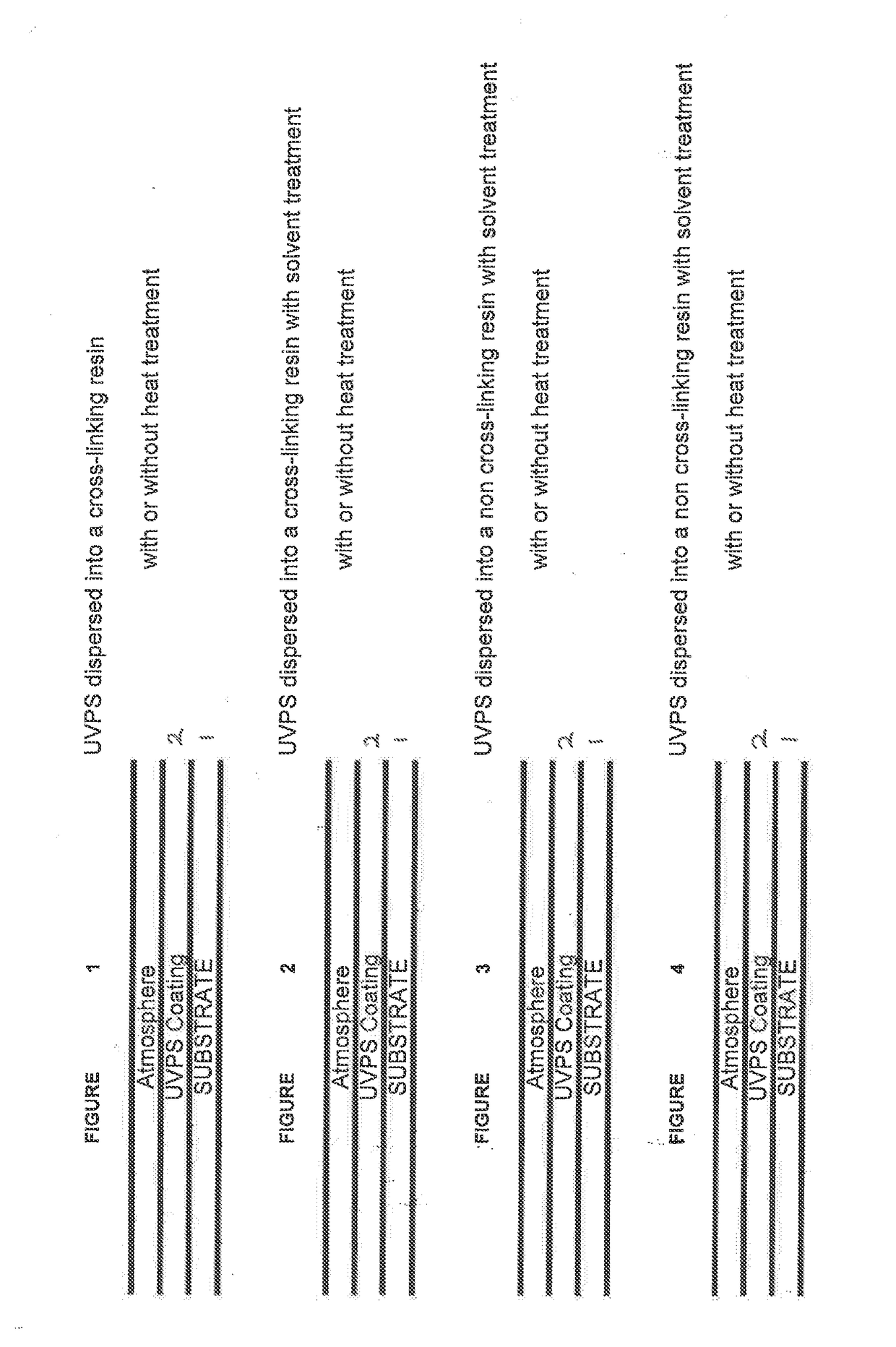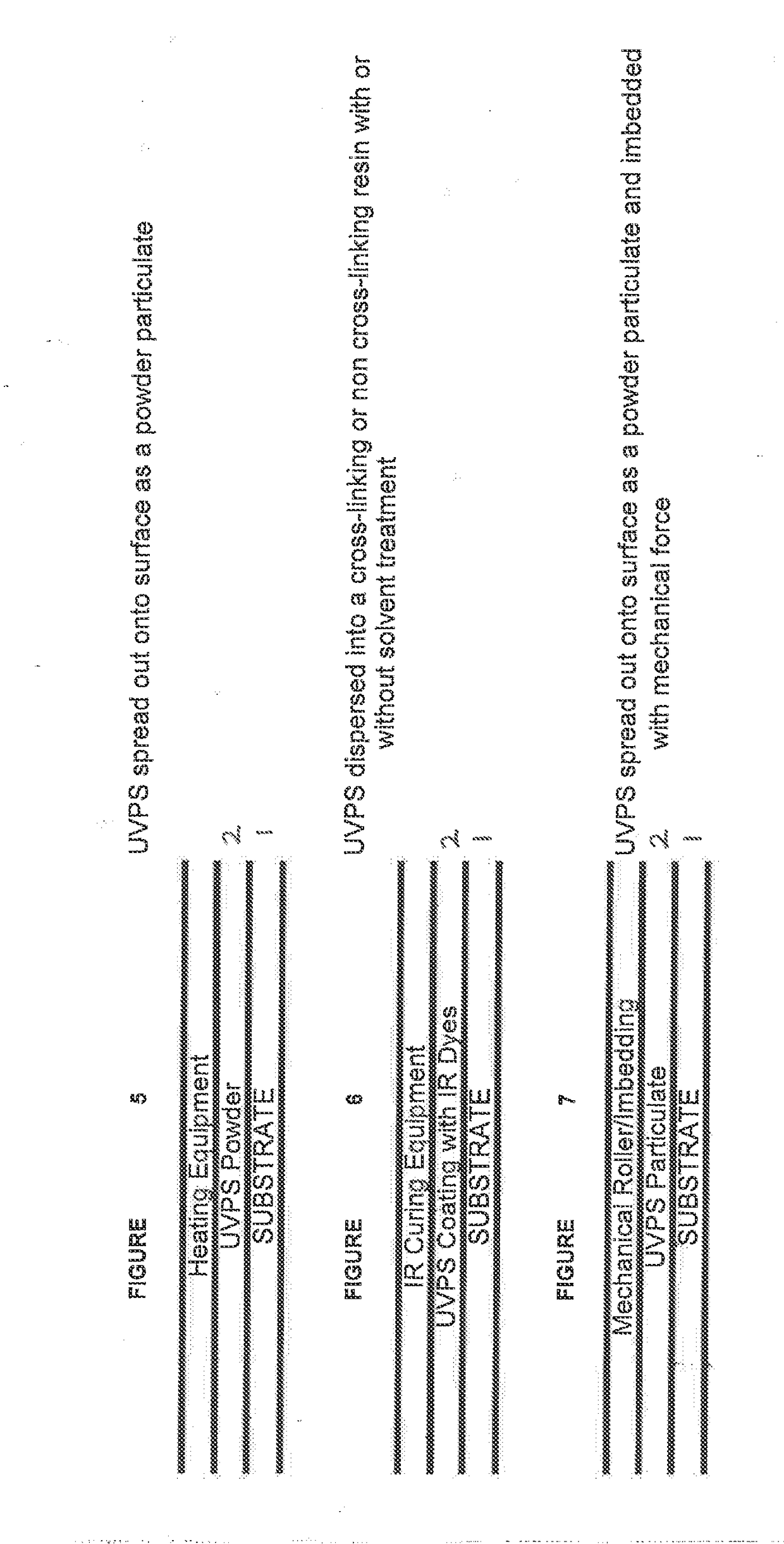System and method for protection against ultraviolet radiation
a technology of ultraviolet radiation and protection technique, applied in the field of system and method for protecting against ultraviolet radiation, can solve the problems of reducing the service life, loss, and eventual failure of physical properties of a great majority uv blockers, and other uv hindering materials in the marketplace today, and limiting the effectiveness and functionality of uv protection techniques such as uv absorbers, so as to limit the exposure of uv radiation
- Summary
- Abstract
- Description
- Claims
- Application Information
AI Technical Summary
Benefits of technology
Problems solved by technology
Method used
Image
Examples
examples
[0075]Hereinafter, the exemplary embodiment will be described in detail using examples, but is not limited to these examples.
example i
[0076]1. Substrate
[0077]EPDM
[0078]2. Nature of the Specific Substrate—
[0079]Because EPDM is by nature aromatic, a functionality that is compatible with EPDM is selected, but not chemically identical to the EPDM matrix.
[0080]3. Method of Gaining Adhesion or Bonding of UV Protection System to the Substrate—
[0081]Determine the best option and compatibility into the chosen resin system: Find a solvent or treatment that will disrupt the crosslinking of the EPDM. It is known that amyl chloride, aromatic hydrocarbons, methylene chloride, lacquer thinners, mineral spirits, and perchloroethylene all attack and can, at sufficient concentration and exposure time, dissolve EPDM.
[0082]Also consider the following variables in the selection: cost, availability, flammability, and OSHA Restrictions.
[0083]4. Environment where the Application will be Made—
[0084]The substrate to be installed is in an outdoor location. Therefore, all environmental, health and safety, and OSHA requirements for this locat...
example ii
[0088]1. Substrate—
[0089]Polyurethane Coating
[0090]2. Nature of the Specific Substrate—
[0091]Because Polyurethane Coating is by nature hydroxyl functional, a polyurethane resin is used for the UV protection system, so that a chemical bond may be achieved.
[0092]3. Method of Gaining Adhesion or Bonding of the UV Protection System to the Substrate—
[0093]Determine the best option and compatibility into the chosen resin system: Find a solvent or treatment that will disrupt the crosslinking of the polyurethane coating. Solvents such as acetone, MEK, MIBK may be appropriate, which chemically etch polyurethane.
[0094]Also consider the following variables in the selection: cost, availability, flammability, and OSHA Restrictions, along with the degree by which the solvent will cleanly volatilize to ensure intercoat adhesion.
[0095]4. Environment where the Application will be Made—
[0096]The substrate to be installed is in an outdoor location. Therefore, all environmental, health and safety, and ...
PUM
| Property | Measurement | Unit |
|---|---|---|
| wavelength | aaaaa | aaaaa |
| diameter | aaaaa | aaaaa |
| diameter | aaaaa | aaaaa |
Abstract
Description
Claims
Application Information
 Login to View More
Login to View More - R&D
- Intellectual Property
- Life Sciences
- Materials
- Tech Scout
- Unparalleled Data Quality
- Higher Quality Content
- 60% Fewer Hallucinations
Browse by: Latest US Patents, China's latest patents, Technical Efficacy Thesaurus, Application Domain, Technology Topic, Popular Technical Reports.
© 2025 PatSnap. All rights reserved.Legal|Privacy policy|Modern Slavery Act Transparency Statement|Sitemap|About US| Contact US: help@patsnap.com


